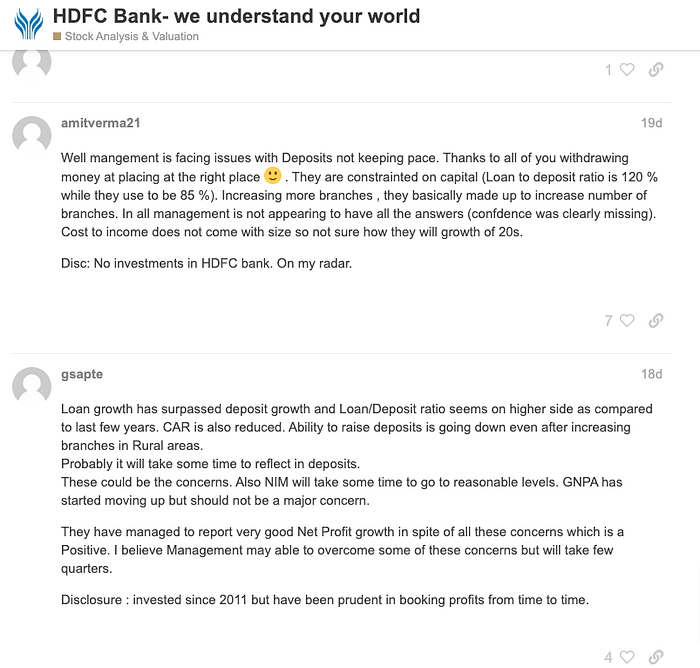What is the fuss?
If you are a stock investor, you know how time-consuming it is to track the quarterly earnings of the companies you have invested in. You have to go through 30+ pages of earnings presentations, 10+ pages of audited financial statements, 1+ hour of earnings conference calls, etc.
You need to do this within a couple of days or a maximum of one week after the earnings release to make buy, sell, or hold decisions accordingly. Many times, it reinforces your conviction in remaining invested in a company.
Reviewing one company’s quarterly performance can easily take 4 hours of focused time.
If you have a concentrated portfolio of 20 stocks, you need around 80 hours of focused time.
Many investors have a core portfolio and a tail of stocks in which they have a tracking position. These tail stocks are kept to track a company’s growth.
Hence, 200+ hours of focused time might be needed to review quarterly company updates. This is too much for a full-time employed person who does stock investing on the side.
But hey, there is a solution. A neat one. And more than one.
In this post, I uncover five efficient ways to quickly learn quarterly updates of the companies you have invested in over one weekend.
Let’s get started.
Note: To help you compare across the methods mentioned below, I have used the example of HDFC Bank’s Q3 FY24 results coverage across all these mediums.
1. Summarised coverage in news (<5 mins)
Many financial news and media cover a company’s quarterly performance snapshots. This summarised version contains pros, cons, key highlights, misses, and important announcements made by the company’s management.
I like going to Tickertape’s News section to see which financial news media has covered the latest quarterly earnings report and then read it.
Another source I like is Moneycontrol’s quick summary of the company’s quarterly performance, along with a pro/con analysis.

Just 2–3 minutes of reading time will tell you everything you need to know about the company’s performance in the last quarter. Neat!
2. Social Media such as YouTube (<10 minutes)
An extension of method 1 is to watch quarterly updates summarised by Finfluencers on social media. If you search ‘Company X Q3 results ‘, you will get a list of videos covering the company’s quarterly updates.
These videos are usually 10–15 minutes long. To speed them up, watch them at 1.5x speed.
Alternatively, watch short video reels, which is the newest trend. Some Finfluencers break quarterly updates into multi-part reels.

Note that such videos might have a biased opinion of the influencer, so apply a filter on the takeaways from the videos. Use them mainly to get information on the quarterly updates and then form your opinion.
Some news channels take a short video interview of the company’s CEO or promoter. These are also useful for hearing first-hand from the company’s top brass about the quarter gone by and what lies ahead.

3. Investing Forums and Blogs (<5 minutes)
Some Finfluencers and investors write. They either have a blog or a newsletter. These Finfluencers write a summarised version of the quarterly updates on companies they are tracking.
Some Portfolio Managed Service (PMS) firms also update their invested companies’ performance quarterly—for example, Marcellus’ blog here.
Some active investing forums have members who summarise the quarterly performance. My favourite forum is Valuepickr. The summary on this forum is in bullet points, very crisp, and covers all essential points.

4. Target Price Reports (<5 minutes)
Major investment houses (mutual funds) publish a company target price report, usually five pages or less. It summarises the quarterly revenues and profits and the successes and failures of the company’s growth strategy.

These target price reports also comment on what the fund house thinks the company’s future looks like (favourable or unfavourable).
I recommend using target price reports for a summarised update on the company’s quarterly performance. Please don’t use them to see price targets and make a buy or sell decision only based on them.
I like using Trendlyne’s report section to access all target price reports on a company. It collates recent price target reports on a company from all the financial investment institutions.

Another alternate source is Moneycontrol, which has similar collated target price reports and PDF reports that can be accessed by clicking the PDF-embedded link.
5. AI summaries (< 2 minutes)
Artificial Intelligence has caught up with the equity investment world- and nicely so. Many stock screener platforms use basic AI language algorithms to screen conference call transcripts and summarise them into less than a page of pointers.
These summaries are super useful, mostly accurate, and give you a gist of the company’s performance in the previous quarter.
I use screener.in’s AI summary to skim a company’s quarterly update. These are byte-sized summaries that can be read in less than two minutes and are super efficient.

Bonus: How do I use these sources?
I use the above five sources to gauge the quarter’s performance. I will not dig deeper if a company’s performance aligns with my expectations.
However, if the company did not perform well, not as per my expectations, I will dig deeper to find the reason/s.
Also, if the company has been performing below average for over two quarters, I look for reasons and management commentary on what lies ahead. When will the downturn end, and how is the company preparing to face these challenges?
I usually do deeper research on 4–5 companies in my portfolio in a quarter. The rest of the companies perform okay or better, so I leave out deeper research for these latter companies.
Parting thoughts
The best ways to get to know a company are to go through every page of an earnings presentation, study the balance sheets and small-font footnotes, and listen to the hour-long conference calls. There are finer nuances in these that can help you form an opinion about the company.
The management’s tone in conference calls and their depth of knowledge of the market and the industry are easily gauged via conference calls.
The small-font footnotes in financial statements help you understand the company’s assumptions and whether there are any red flags.
However, you may only get time to do this for some companies for some quarters, especially if you have a full-time job and family responsibilities.
This is where skimming good-quality summarised versions of a company’s quarterly performance comes in handy. I use them all the time. Try them and see if they reduce your time researching and rebalancing your equity portfolio.
Which is your favourite way to skim a company’s quarterly performance update? Do share in the comments below.
Disclaimer: This post is not financial advice. It represents my personal views from my investing experience.




